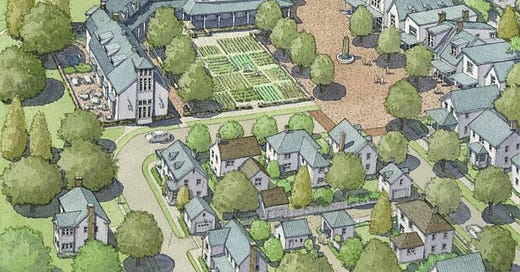A foundation of a thriving community lies in its ability to house all its members - not just adequately, but appropriately. Similar to any ecosystem in nature, a healthy housing market requires both diversity and balance. This depends on two overlapping elements.
There must be enough homes to meet the overall demand in a region.
Housing must be generally available and affordable to households across the full spectrum of income levels and life stages.
Think of housing like a wardrobe - we don't just need clothes, we need the right clothes for different occasions and seasons. Similarly, a community needs a diverse mix of housing types: single-family homes for growing families, accessible condos for aging residents, efficient apartments for young professionals, dormitories for students, and everything in between. When we lack any of these essential pieces, the entire system feels the strain - much like a game of musical chairs where someone always ends up without a seat.
Every community has slightly different market dynamics, availability of land, access to infrastructure, etc. No two communities are identical in terms of the solutions proposed or housing types that are possible. But the process of resolving a housing shortage is relatively straight forward.
However, nearly every community seems to want to solve their housing shortage and affordability gaps without changing the components of the system that created the shortage in the first place. This is an impossible expectation.
Design for our Future
Our current housing system was largely designed from the 1930s through the mid 1960s. It was designed in response to the Great Depression and the economic expansion that followed World War II. Now, 75 years later, we're trying to fit modern squares into mid-century round holes. In the meantime:
Work patterns have revolutionized
Technology has advanced exponentially
Cultural expectations have shifted dramatically
Our understanding of community dynamics and the impacts of economic segregation has deepened significantly
Over the next several weeks, I’ll spend time here exploring ideas about how we might design a better, more prosperous and equitable housing ecosystem for the 21st Century. Along the way, we’ll explore how to create better neighborhoods for kids, how to support more small business and entrepreneurialism close to home, and how to increase connectedness within families and their neighborhood communities.
I’m going to borrow from a lot of people who are much smarter that me. So, for those who want to go deeper in any subject area, there will be plenty of resource links and book recommendations on the way.
As always, thanks for reading.



